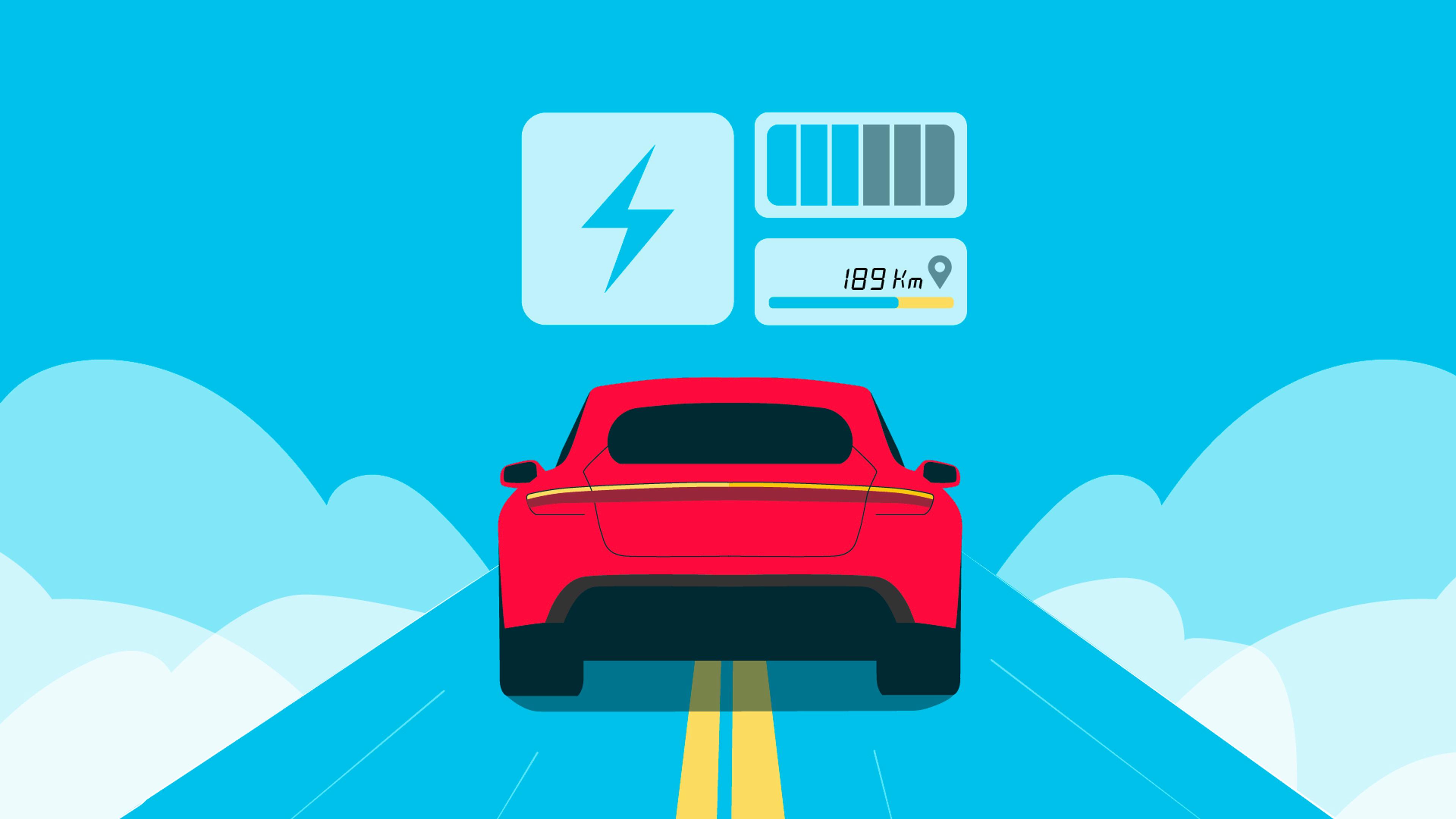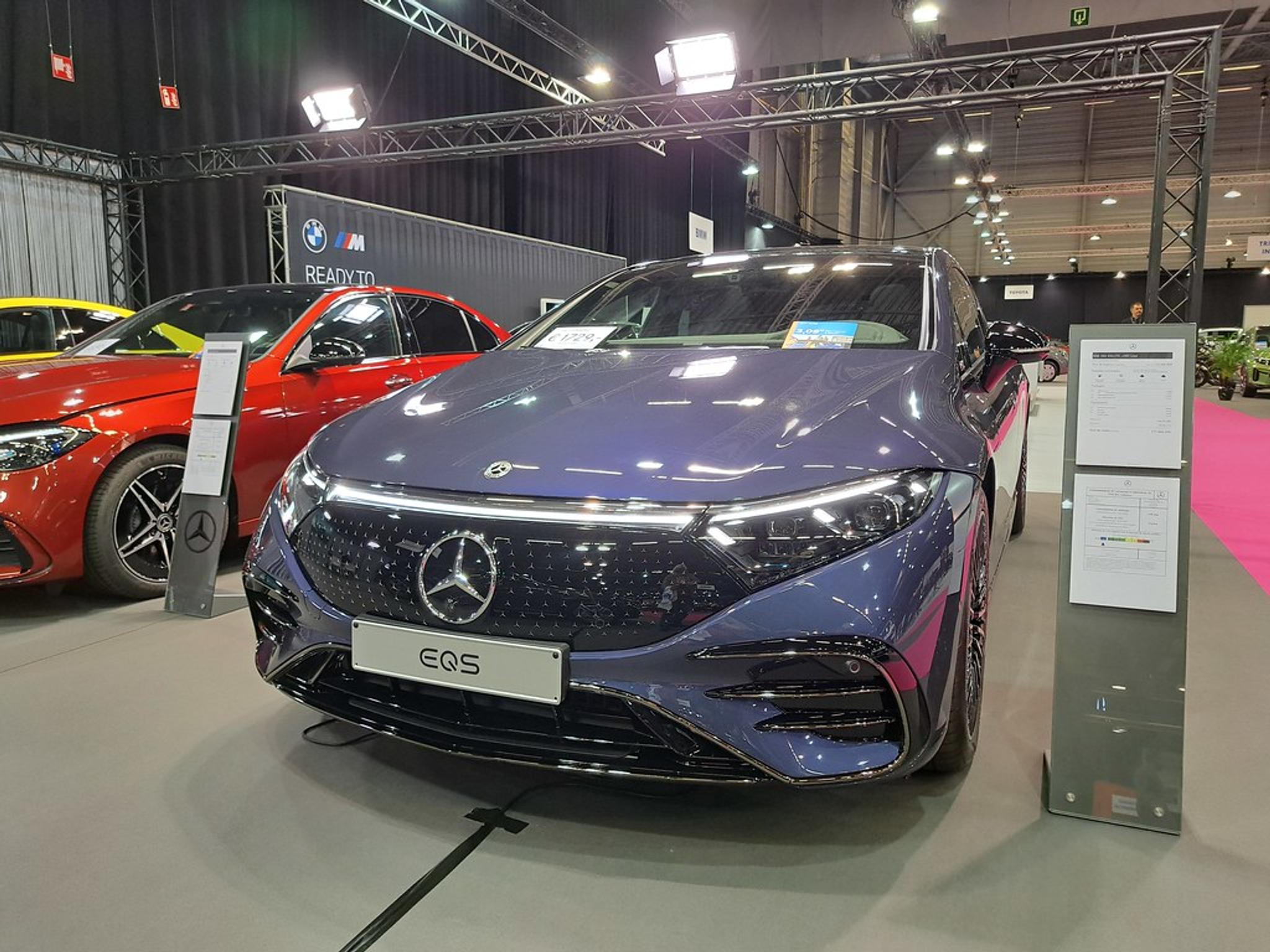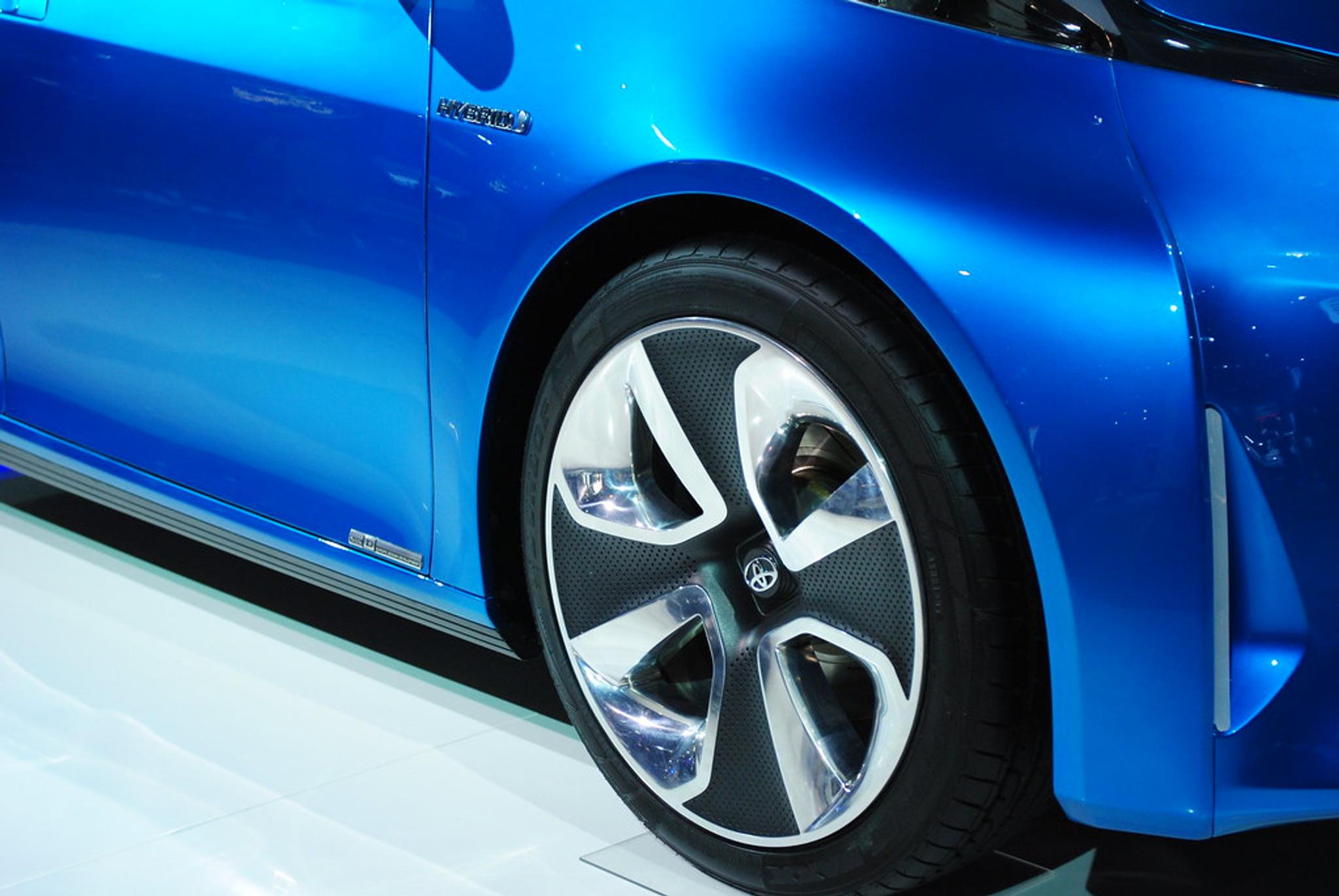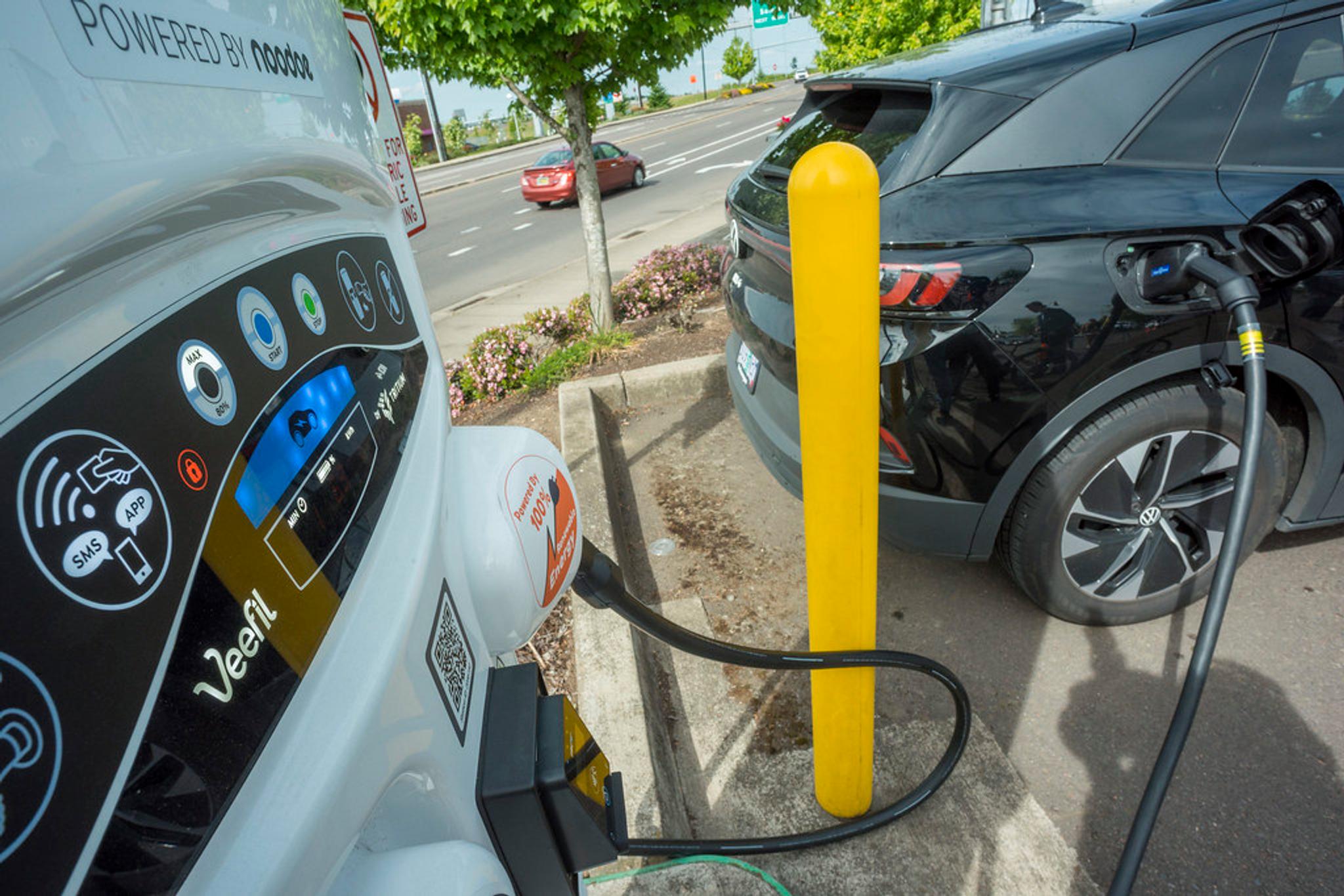How far can an electric car drive?

One of the main concerns when buying an electric car is how far it can drive. Each electric vehicle (EV) stores its energy in battery packs that can only be charged at home or at public charging stations. Nowadays, you can find them all around the world, but taking a long road trip in an electric car still seems risky.
Let’s see how far an EV can drive on a single charge, what affects an electric car’s range, and how to live with it.

Looks can be deceiving!
Don't risk your safety - check it with carVertical first
Electric car range on a single charge
Range is usually the weakest point of electric cars, yet the most important for the majority of drivers.
Electric Vehicle Database reveals that the average range of a modern electric vehicle is 215 miles (345 km). The cheapest electric cars, such as the Smart EQ fortwo and Renault Twingo Electric, have a range of only 60 miles (100 km) and 81 miles (130 km) respectively.
On the other hand, more luxurious Lucid Air and Mercedes EQS models are often among the best electric cars on the market, and some versions boast a range of over 400 miles (644 km).

Choosing cheap electric cars may be tempting, but short range makes them beneficial only for city commuting. The prices of 400-mile EVs start at around $80,000, but these don’t make much sense for those who choose EVs to save money.
How do EV manufacturers achieve better range?
Electric vehicle manufacturers can always install a bigger battery pack to increase range, but this creates more weight and inflates the price. Fortunately, some simple tweaks and features can help reduce power consumption, but these often come at a cost.
Aerodynamics
Have you noticed that most electric cars have smooth, streamlined exterior designs? That’s because the better aerodynamics in a car, the less power it needs to push through the air.
Aerodynamic design usually features a smaller ground clearance, specific wheels, digital side-view mirrors, and hidden door handles.

Enzo Ferrari once said that “aerodynamics is for those who cannot manufacture good engines,” but when it comes to preserving energy, tires, and environment, reducing drag coefficient is key.
In the EV industry, aerodynamics is essential.
Regenerative braking
All modern electric cars have a regenerative braking feature that charges the battery using a car’s kinetic energy. When you drive a regular gas car, it starts coasting as soon as you let off the gas, meaning the kinetic energy still moves the car.
An electric car captures that kinetic energy to charge the battery, so the car is slowing down faster. As you don’t need to use brakes in an EV as often, regenerative braking not only charges the battery, but also preserves brakes.
Battery heating and cooling
Heat and cold are battery killers. Batteries lose a tremendous amount of energy during extreme temperatures, therefore, some electric car batteries have heating or/and cooling systems.
These systems require lots of power, but using them is still more economical than letting the extreme temperatures do their job – an EV can lose up to 35% of range in freezing conditions!
You should test these systems beforehand if you’re buying a used electric car. Remember that most EVs imported from colder areas don’t have battery cooling systems, while those imported from hotter areas don’t have heated batteries.
Additional features
Many features of new electric cars operate based on the internet connection, therefore, manufacturers can adjust various features and update software remotely.
They can also adjust features that affect the range of an EV, such as power distribution, along with the electric motor, cooling, heating, and infotainment system control. For instance, the central air conditioning compressor can use up to 2kW of power, meaning that it affects the range significantly.
What if an EV runs out of charge?
Running out of charge in an EV is so feared that it even has a specific term – “range anxiety.” All electric cars have some kind of low charge warning systems that notify drivers when a battery is at 20-30% charge or lower.
When a battery is drained, some electric cars even have a “turtle mode” that gives you a little power for the last time to “crawl” onto the side of the road. However, the actual EV’s range varies by weather, maintenance, and battery’s age.
Unfortunately, there’s not much you can do when your EV runs out of charge – you either have to pray there’s a charging point next to you, or you’ll have to call road assistance.

The good news is that it’s pretty hard to accidentally run out of battery.
For instance, Tesla cars provide all kinds of warnings before draining the battery: flashing lights, sound signals, or try to direct you to the nearest charging station. And even if an EV’s battery is too drained to drive, it should still have some charge left for lighting and emergency calls.
The situation becomes much worse when you’re in a remote location and your car’s going to die before reaching the nearest charging station. In that case, you can get some additional range if you:
- Turn off air conditioning and heater
- Keep the windows shut
- Slow down
- Use regenerative braking
These actions may get you an additional mile or two, which can make a huge difference when your battery is running out of juice.
How to get the most range out of an EV
The main problem with batteries in electric cars is that they deteriorate fairly quickly. Therefore, getting the most range requires a combination of efficient driving habits, proper maintenance of a vehicle, and making use of available charging infrastructure.
Here are a few key things to remember that’ll help to get the most out of your EV’s battery:
- Take care of your car’s battery. Extreme temperatures and charging states below 20% and above 80% affect the range significantly. For instance, an electric car can have up to 35% less range during cold winter.
- Drive more carefully. Don’t brake and accelerate excessively. Make slower turns and let a regenerative braking system kick in more often. That way, a battery won’t experience unnecessary stress.
- Plan your trips. Every time you start your electric car, it uses energy to cool or heat a battery pack. Instead of driving it multiple times a day, combine all your plans into one trip so that you would need to heat up or cool down a car’s battery only once.
- Avoid fast charging. Fast charging negatively affects the battery’s overall life cycle, so don’t use it repeatedly.
Range tips for all electric vehicles are pretty much the same, but you still should check the manufacturer’s recommendations because you may find out about additional charging features and modes.
The EVs range drops over the years, but you can slow down the deterioration with proper maintenance and care.
